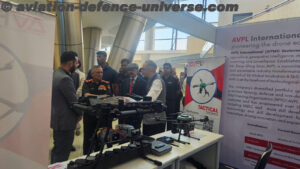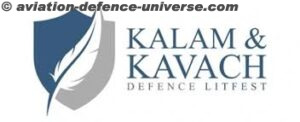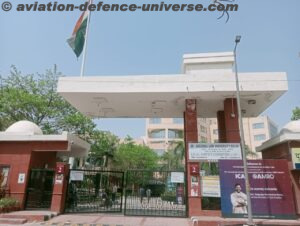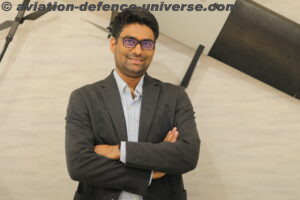By Col NN Bhatia (Retd)
- Terrorist attacks should not become India’s routines
New Delhi. 22 July 2017. To continue with what was an analysis of can we stop future Pathankots, we will now ponder on the solutions to implement which will help us in avoiding such a tragedy in the future.
Five Commandments in Security Planning of Vital Installations
- Firstly, Security should be based on threat perception & not for glamour or pomp or show.
- Secondly, security should eliminate threats & crimes. White collar, cyber, internet & organised crimes occur on intrusion and misuse of detection systems.
- Thirdly, security is neither permanent nor perfect as technologies obsolete very fast & modern day terrorists & criminals being very high tech-savvy evolve new methodologies to damage our installations. Management & security force must keep themselves abreast with fast changing technological developments to outwit criminals & terrorists in their game to harm us.
- Fourthly, security systems should be cost effective, user friendly, in depth & easy to implement.
- Fifthly, security systems should be periodically reviewed & audited by professionals to eliminate weaknesses & mid-course corrections. For training, development, advice & audit, experts need to be employed permanently.
Recommendations in Manning Security of Vital Installations
The National Security Management requires integrated approach & coordinated applications of the political, military, diplomatic, scientific, industrial & technological resources of the state to protect and promote national security goals and objectives. Therefore, ‘Security of Vital Installations & Infrastructural Security’ forms integral part of the National Security Management. Of late, multidimensional threats to national security have increased many folds from, international terrorism, espionage, sabotage, subversion internal conflicts, secessionism, communalism, gheros, strikes, emergence of white collar crimes and cyber terrorism. Technological advancements in Industrial Security have ensured access control, surveillance, detection and damage control more effective, accurate and timely. Top Management and Security Officers cannot any more remain content with their preventive and physical security roles. They have to be proactive and upgrade their skills as terrorists and anti-national elements (ANEs) are using hi-tech equipments to destroy our vital installations. Contrary to the earlier notion that all expenditure on security was of ‘no return investment’, Industrial Security has graduated from ‘Chowkidari’ to all pervasive Asset Protection, Loss Prevention, Crime Control, Intelligence, Safety and Disaster Management.
On the onset, I will confess I have not visited the IAF Base Pathankot. But as an ‘Industrial & Infrastructure Security Consultant’, I have undertook security audits of Banks, DRDOs, Mints, Nuclear Energy, Oil, Ordnance Factories, Power, Ports, Prasar Bharti (AIR & Doordarshan Kendras) Railways, Refineries, Space, Ship Building, Telecom & various vital Research Centres & Laboratories in both public & private sectors. Based on my experiences on physical security of the strategic installations & the visuals flashed in the various TV news channels, I have summed up my comments on planning security of the vital installations enunciated below:-
Major Lacunae in Security Management of IAF Base Pathankot
Perimeter Security
- Spread over 1600 acres, the vast 10 feet high perimeter wall is having 2 feet high concertina coil over hang broken at many places with foot holdings providing ease in scaling the wall. In the US & Israel perimeter is protected by multiple layers of concertina or chain link fences that are 8-10 feet high with 6 inches gap and poles 6 feet apart in between clipped together at intervals. Fence protection devices available are electric, electronics, electro-magnetic, optic fiber cable, active infra red, microwave intrusion alarms, seismic and sensors systems in various configurations but none of them were used in Pathankot base. There are numerous miscellaneous openings like culverts, nalas, sewers, drain pipes, exhaust conduits, intake pipes, manhole covers etc. Any such opening having a cross-section area more than 96sqi or more must be protected by bars, grill works, barbed wire and alarms & vents doors with proper locking devices. 24×7 CCTV coverage and patrolling of such vulnerabilities need to be ensured.
- There appears to be no CCTV coverage of entire perimeter wall & mostly where ever CCTVs are installed, they are found non-functional & without constant recording & monitoring facilities.
- While designing perimeter wall, the topography & ground configuration around the installation must be catered for. Undulating, dead ground, water channels, vegetation must be under constant surveillance & no trees, electric poles or tall buildings constructed within 20 meters either side of the perimeter as they hinder visibility, field of fire and assist in scaling it. The area within the complex needs to be cleared of undergrowth and thick vegetation misused by miscreants to hide & store weapons, ammunition, explosives & stolen goods. Also, in summers, dry grass leads to fires.
Gates
Every opening in the perimeter barrier is a potential security hazard as more openings mean more deployment to protect them. Hence gates should be kept to minimum. Gates not used should be sealed, if not locked and manned.
- Area around the gates must be properly lighted with a dedicated phase of power supply & emergency lighting system.
- Sturdy construction to with stand ramming of explosive laden vehicle(s) by terrorists.
- Height of the gates should not be less than the perimeter wall.
- Anti-scaling devices should be fitted on gates to negate climbing over.
- Gates must be manned round the clock-ensure sentries in pairs in night and inclement weather. This is often not done on lesser used gates like emergency gate to economize on security manpower.
- The Security Control Room is well secured and located near the Main Gate and manned round the clock with duplicate communication, anti-sabotage checking equipment like HHMDs, DFMDs, explosive detectors, trolley mirrors with night capability, mobile ramp to check overhead carriage of trucks and buses, first aid box, loud hailer and alarm system.
- Fool proof system of issuing and collecting passes, escorting visitors, frisking and checking men and vehicles entering and exiting the installation. Access control is of paramount importance.
- CCTV monitoring console and car number plate reader with recording & play back facilities should be provided at gates.
- In larger installations there may be more than one gate and separate materials in and materials out gates that must be secured with necessary documentation.
- Railway gate(s) if any need manning like other gates.
- Wicket gate(s) with smart cards entry for staff could also be provided for speedier & secure movement.
- Manual /electronic barriers constructed to hinder free run of doubtful traffic.
- Speed breakers should be erected on either side to ensure vehicles slow down /stop while entering or exiting for thorough checking. Tyre busters in sensitive installations may also be installed.
- Security staff should be adequate with day’s quick reaction team (QRT) located nearby for meeting any threat.
- Arms of guards must be secured with chains tied to belt to ward off arms snatching by the miscreants. Sentries must have whistle, baton & torch in night.
- Vapour Cloud Tracking & Detection System should be installed in sensitive, vulnerable areas to prevent fire in ATF & lubricants storage areas.
Watch Towers
To enhance the physical security of the large perimeter, watch towers should be constructed laying emphasis on the following aspects:-
- Sited tactically with clear field of vision and fire with no dead ground in between. If there is dead ground or blind area it should be reinforced with barbed wire and concertina coil like obstacle system & kept under CCTV & patrolling surveillance.
- Manned 24×7-preferably in pairs in night/inclement weather and frequently visited by patrols.
- Height of the watch towers from ground should be 15-20 feet depending on the height of the perimeter wall and topography around the installation.
- Staircases of watch towers are so constructed to facilitate security guards to easily negotiate them during day and night with their arms and equipment.
- Provided protection from adverse weather conditions like heat, snow or rains. In insurgency environment they should provide sentries good field of fire, observation and protection from small arms fire and splinters.
- Have rest rooms with cots, toilet and water facilities.
- Provided duplicate communication and in mutual support of the neighbouring watch towers.
- Search lights with dedicated power supply, CCTV coverage, binoculars & night vision devices (NVDs) provided to optimize effective surveillance.
- Sentries perform 2-4 hours duty at a stretch. Beyond that is extremely tiring and not conducive to installation’s security.
- Duty officer of the day and night must check the watch towers.
- Sentries manning the watch tower should never panic and inform Security Officer /Security Control Room and neighbouring watch towers if unusual development occurs.
Car Park
- After thorough anti-sabotage checking of vehicles & verification of drivers/helpers, only minimum essential vehicles be permitted parking inside the installation which should be close to the administrative block.
- Parking lots outside the perimeter should be close to manned gates with proper lighting along with toilet, rest room and canteen facilities for the drivers and helpers.
- Licences of drivers of the vehicles entering inside the complex must be checked and collected at gates and given back while vehicle exits installation. That is only feasible if one gate is only used for entry and exit and traffic is moderate.
- Ensure no vehicle is If there is any such vehicle, police must be informed to tow it away.
- Vehicles without spark arrestors are not permitted in the vicinity of ATF stores/ refineries.
Perimeter Lighting
- Poles should be minimum 15-20 feet away from the perimeter wall with sufficient height with barbed wire rapped to prevent scaling.
- Thumb rule for lighting is that the inner areas should have 40% while area outside the perimeter should have 60% illumination so that miscreants cannot have clear view of installation from elevated structures while sentries at gates & watch towers have good night vision outside the perimeter.
- Power cables should be underground & junction boxes secured.
- Electrical equipment installed in sensitive installations should be approved by the national regulatory agency
Access Control
Access control was perhaps the weakest link in the IAF Base Pathankot as large numbers of workers, families, contractors, vendors, AMC providers, maintenance staff and vehicles move in & out of the installation. Following need to be ensured:-
- Airbase being sensitive installation, be got declared as ‘Prohibited Place’ under the Official Secrets Act, 1923 and warning boards displayed to the effect in English, Hindi & local language with maximum punishment to act as
- Issue of biometric identity cards, visitor passes & visitor badges to be displayed physically.
- Regular checking of identity cards & passes at the gates.
- HHMDs/ DFMDs/ Explosive Detectors are used for frisking of employees, labour, contractors, visitors, AMC staff & their vehicles.
- Over head mobile ramps to check upper carriage of vehicles.
- Dog squad (sniffer & patrol). Both handlers and animals must be trained.
Surveillance Devices
- Day & night patrolling both within & outside the perimeter.
- Manning all watch towers normally not done to save on manpower expenditure.
- CCTV system with continuous day, night & adverse weather condition recording & play back.
- Installation of intrusion & fire alarms.
- Dog squad as discussed above.
- Cyber & communication security.
- Drones, satelites & aerial reconnaissance.
- Satellite imageries.
Security Force
Each installation must have three layered security so that if one is breached, unauthorized access is detected at the next two layers. In IAF base only Defence Security Force coupled with private security personnel were employed who are old, ill trained, physically unfit lacking motivation & zeal. There are large numbers of IAF installations, therefore, IAF need to raise their own dedicated well trained & equipped force with the state of the art weapons & equipment to protect their vital installations.
C&A verification of security staff is vital as lately many defence services and police personnel have been found involved in dubious activities. Men with certain character deficiencies & weaknesses for 3Ws (wine, women & wealth) are weeded out with disciplinary actions. Drugs, arms, narcotics & FICN lobbies have long compromised the police and para-military forces making the country’s western and eastern borders porous. Now they are reportedly penetrating in the armed forces as incentive for making easy money are very high. What goes for security staff needs to be discreetly watched in other employees serving in sensitive installations close to borders!
Basic factors to be kept in mind while dealing with a terrorist attack
- Task of neutralizing terrorists is specialized one and undertaken only by trained military /police commando force.
- Terrorists are ruthless, well armed and indifferent to consequences of their actions. Nothing be said or done to provoke them into violent action.
- Terrorists will be on look for targets like head of the installation or most sensitive /vulnerable equipment there. So, nothing should be said or done to give away to terrorists this special knowledge.
- Most of the terrorist threats are to induce fear. Therefore, while outwardly displaying fear, inwardly employees should confidence to neutralize such threats. Avoid panic and be calm. Quiet prayers and yoga help to remain calm.
Pro-active Steps (before the terrorists attack)
- Ensure trained security force & commandos are located inside the complex.
- Direct communication link from innocuous location with Security Control Room is maintained.
- Crisis Management Group (CMG) within the installation should handle all decision making tasks in a terrorist situation.
- An alternate Crisis Management Group with senior managers who normally work away from the installation may also be formed.
- Detailed physical plan of the installation with locations of vulnerable areas, buildings, doors, stairways, lifts, along with photographs would always be helpful to counter terrorist force to launch offensive against terrorists.
- With the cooperation of the police/ security forces locally located, a ‘Terrorist Attack Contingency Scheme (TACS) should be prepared.
Actions to be taken if terrorists attacks
- Sound alarm.
- Immediately contact /inform head of the installation, nearest military unit, police, hospitals, blood banks, fire services, civil administration & adjoining installations.
- CMG immediately convened along with stand by CMG outside the plant. Only CMG should contact /brief outside security force, police and civil administration.
- Cordon installation and man traffic with own security staff till arrival of the specialised commando/ security force.
- Evacuate non-essential vehicles and personnel to prevent injury and loss of life in an orderly manner.
- Assist specialised police /military force in encircling the terrorist infested area in the installation to confine and neutralise them.
- No attempt by employees or installation’s security personnel should be made to encircle terrorists. Clumsy attempts will provocative terrorists to fire and inflict avoidable causalities.
Integration of Security Technology
Integration of Security Technology in any installation under potential terrorists’ threat should be cost effective and user friendly. The necessity of integrating the various sub-systems in the Central Control Room is as under:-
- Access Control Mechanism
- CCTVs with Centralized Control mechanism
- Alarms & alarms monitoring including fire fighting & bomb detection/nuterlisation.
- Biometric ID badging.
- Perimeter or fence intrusions detection system.
- Intercom (video & sound).
CCTV system acts as ‘eyes and ears’ to the security system. The role of alarms, access control & perimeter systems are to detect, restrict & control movement of people. The system integration should be done in multimedia mode using graphic user interface (GUI). Before going for integration technology, a detailed feasibility survey by electronic, IT, fire safety and security experts to design a cost effective and user-friendly system should be undertaken. Though not discussed, buildings, cyber, documents & personnel security will always be dove-tailed in the security management of vital installations.
Notwithstanding PM Modi’s visit to Pathankot IAF Base on 9 Jan 2016, we hope lessons learnt will be strictly enforced to protect our national interests. Also, both India & Pakistan should learn to eradicate terrorism plaguing both countries & not fight with each other.
(NN Bhatia is a Delhi-based strategic analyst and a retired Army officer. The views in the article are solely the author’s. He can be contacted at editor.adu@gmail.com)




























































































































